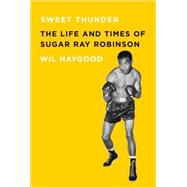
Wil Haygood, who lives in Washington, D.C., is a staff writer for the Style section of The Washington Post. In Black and White: The Life of Sammy Davis, Jr. received the Zora Neale Hurston/Richard Wright Legacy Award, the ASCAP Deems Taylor Outstanding Musical Biography Award, and the Nonfiction Book of the Year award from the Black Caucus of the American Library Association, and it was named one of the top ten books of the year by the Chicago Tribune.
| list of illustrations | p. ix |
| Prologue: Round Midnight | p. 5 |
| Say Goodbye to Walker Smith Jr. 1921-1942 | p. 11 |
| Sugar Ray's Uniform 1943-1944 | p. 55 |
| Esquire Men 1945-1946 | p. 99 |
| A Lovely Setup for the Old Man | p. 137 |
| Killer 1947 | p. 155 |
| An Opera in Six Brutal Acts 1942-1951 | p. 185 |
| Around (a Part of) the World in Fifty Days 1951 | p. 267 |
| Dreams 1952 | p. 305 |
| The Very Thought of You Onstage 1953-1954 | p. 329 |
| Greatness Again 1954-1956 | p. 349 |
| Battling 1960-1962 | p. 363 |
| Autumn Leaves 1963-1966 | p. 383 |
| Saving All Those Walker Smith Juniors 1967-1989 | p. 397 |
| Epilogue | p. 409 |
| acknowledgments | p. 415 |
| source notes | p. 419 |
| selected bibliography | p. 421 |
| notes | p. 427 |
| index | p. 443 |
| Table of Contents provided by Ingram. All Rights Reserved. |
The New copy of this book will include any supplemental materials advertised. Please check the title of the book to determine if it should include any access cards, study guides, lab manuals, CDs, etc.
The Used, Rental and eBook copies of this book are not guaranteed to include any supplemental materials. Typically, only the book itself is included. This is true even if the title states it includes any access cards, study guides, lab manuals, CDs, etc.
Excerpted from Sweet Thunder: The Life and Times of Sugar Ray Robinson by Wil Haygood
All rights reserved by the original copyright owners. Excerpts are provided for display purposes only and may not be reproduced, reprinted or distributed without the written permission of the publisher.